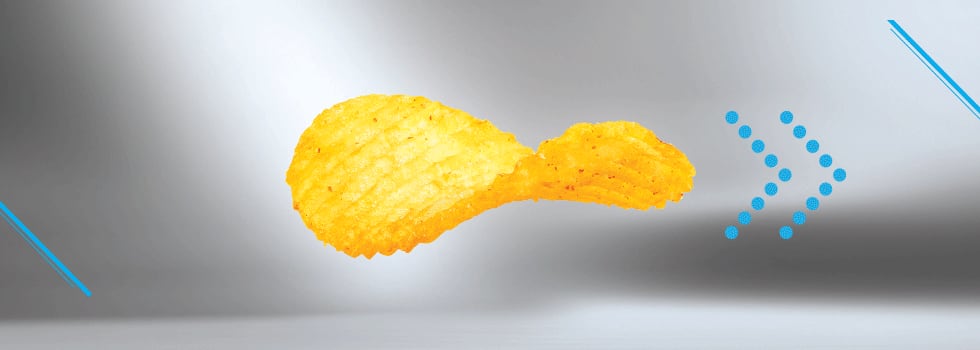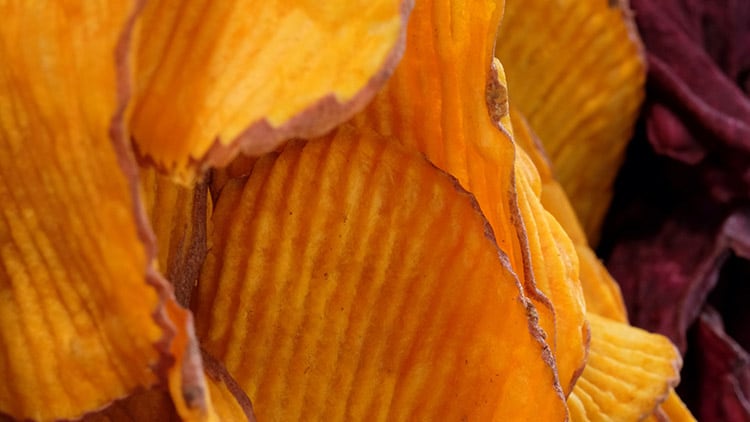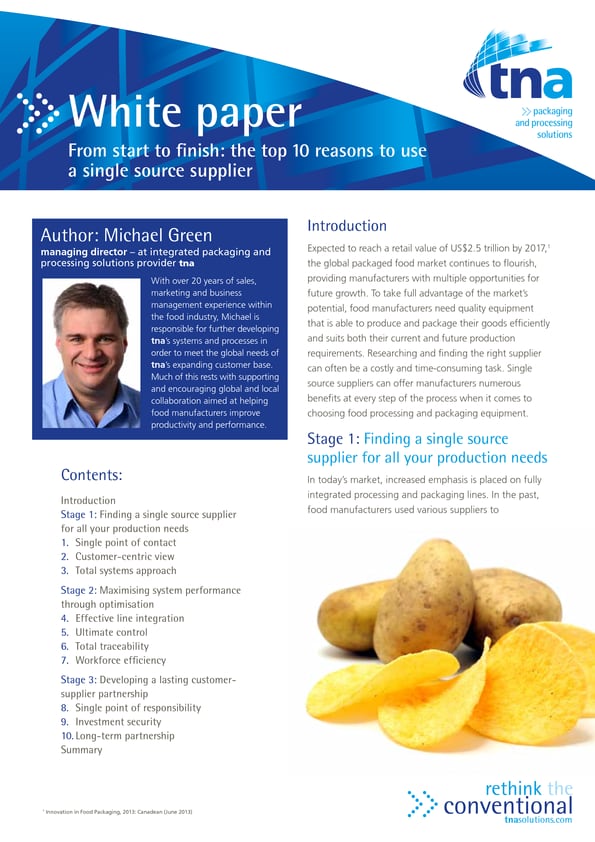Thiago Roriz, General Manager, Latin America
Potato chips have come a long way since the first mass produced varieties in the early 20th century. Since then, the product has taken on many different forms to cater to evolving consumer needs. From initial seasoning forays into cheese and onion, to the more recent experimental sriracha and decadent baked camembert flavours, retail shelves have been expanding to incorporate new and exciting tastes. But it’s not just new flavours; potato chips have been gaining ground on the health front too. The result of changing consumer behaviour, snack manufacturers are reconsidering their formulations to address growing interest in healthier options, as well as mixing up their packaging formats to help meet government guidelines on portion control.
The lay of the land
Potatoes are a blank canvas for a wide range of different tastes, making chips the perfect vehicle for the latest food ingredient trends. As such, snack manufacturers are experimenting with bold and spicy flavours in 2020, with ingredients like wasabi, horseradish or Thai chilli jostling for space alongside more traditional options on the shelves. This trend has largely been driven by consumers’ increasing exposure to other cultures and their desire to go on a ‘food adventure’.
Meanwhile, consumers leading busier lifestyles are also exerting their influence on the market landscape, as lines are blurring between traditional fixed mealtimes and on-the-go snacking. The savoury snack market has been reaping the rewards, having been valued at an impressive US$137.2 billion in 2018, and expected to grow at a CAGR of 5.2% over 2018-2023, to reach US$176 billion by 2023.[1] The importance of achieving the ‘perfect’ bite for consumers is therefore key to standing out in today’s crowded marketplace. New product development in the potato chip category has been flourishing lately, to cater for the burgeoning numbers of consumers looking for a treat, energy boost or just something to do.
Health kick
A key factor driving the potato chip market has been the widespread push for ‘better for you’ ingredients. The trend for healthy snacking has been gaining ground in recent years as consumers seek foods that satisfy hunger in a convenient way, while also supporting their physical and mental wellbeing. Although potato chips have traditionally been associated with high amounts of salt and fat, manufacturers have been understandably keen to capitalise on this trend, taking steps to adjust the nutritional profile of their snacks through different technologies and ingredients.
One way to attract consumer interest is to consider innovative pre-processing techniques, such as pulsed electric field (PEF) technology, which uses electrical impulses to puncture cell membranes to prevent excessive oil uptake while retaining a crisp texture. Multi-stage frying is also increasingly being used as an alternative to straightforward atmospheric frying, as it can uphold the nutritional value of raw materials without the need for additives or colourants, while vacuum frying is ideal for reducing acrylamide formation – a potentially carcinogenic substance.
Developing healthier snacks, however, relies on maintaining the same taste and texture that consumers love. As such, accurate seasoning systems are gaining popularity with manufacturers looking to precisely control the amount of oil and seasoning that is applied to the product – for improved taste, accuracy and consistency. The type of oil used has become a key consideration in recent years too. While olive or coconut varieties are currently popular choices for consumers looking to proactively improve their health, snack food manufacturers are increasingly innovating with different oils, such as those made with high-oleic seeds, for a healthier alternative without losing any robust flavours - to keep consumers coming back for more.
More than just a potato…
The simple potato is still one of the most popular ingredients for chip fans, but there is fast-growing interest in superfood vegetables. Raw materials with a health halo, such as kale, parsnip, beet and spinach, are increasingly being used as an alternative to the traditional potato, driven by demand for healthy snacking, as well as the distinct, bold flavours they bring to the table. Creative manufacturers are also turning to superfood fruits, like banana, kiwi or mango to expand consumers’ taste buds further still. Meanwhile, legumes such as chickpeas and lentils are having a renaissance in 2020, as people look for healthier options.
Following this interest in new raw materials, manufacturers are looking to adapt their production line accordingly. Fruit and vegetables, for instance, contain high levels of moisture, amino acids and reducing sugars, like fructose, which aid the formation of acrylamide using traditional frying methods. The latest cutting-edge pre-processing, frying and seasoning technology is therefore helping snack manufacturers create products with consumer appeal – without losing the distinct taste and texture.
Portion control
It’s not just consumer demand that is contributing to the changing the face of the potato chip. Health organisations are increasingly putting snack products under the spotlight, in a bid to reduce obesity rates across the world. The World Health Organization (WHO), for example, set forward recommendations in 2010 to regulate portion sizes - to help change people’s perceptions of healthy food options.[2] Similarly, the British Medical Journal (BMJ) outlined guidance that suggests product portions should be packaged individually.[3]
These changes are inevitably causing repercussions on the production line, as demands grow for single portion packets. Manufacturers therefore need increased flexibility, to allow them to switch quickly and easily between different pack sizes, with minimal downtime. The fryer capacity must also be a consideration, as the fryer will often continue to process the same capacity of product as it did previously. The equipment in use is therefore the biggest obstacle to overcome when changing packaging sizes of savoury snacks like potato chips. Investing in flexible packaging equipment, like the tna robag 3 series, can help deliver optimised packaging speeds and yield, for maximum production and savings.
Where next?
Potato chips have evolved significantly since their humble beginnings. Manufacturers continue to overcome processing hurdles to keep up with – and exceed – consumer expectations, through healthier options and varied packaging sizes. Expect to see plenty more innovation in the future, as busier lifestyles mean people are turning to their snacks as a replacement for traditional mealtimes – and want their potato chip flavours to reflect this.
Ingredients like cricket protein are certainly on the horizon, thanks to the growing emphasis on sustainable food production, but taste and texture will likely still reign. Implementing the right cutting-edge technology will, as ever, remain key to staying ahead of the latest trends and ultimately, creating products with the ‘perfect’ bite that will continue to keep consumers on their toes for many more years to come.
[1] Global Data, Opportunities in the Global Savoury Snacks Sector, December 2019.
[2] WHO, ‘Set of recommendations on the marketing of foods and non-alcoholic beverages to children’, 2010.
[3] BMJ, ‘Downsizing: policy options to reduce portion sizes to help tackle obesity’, January 2016.




